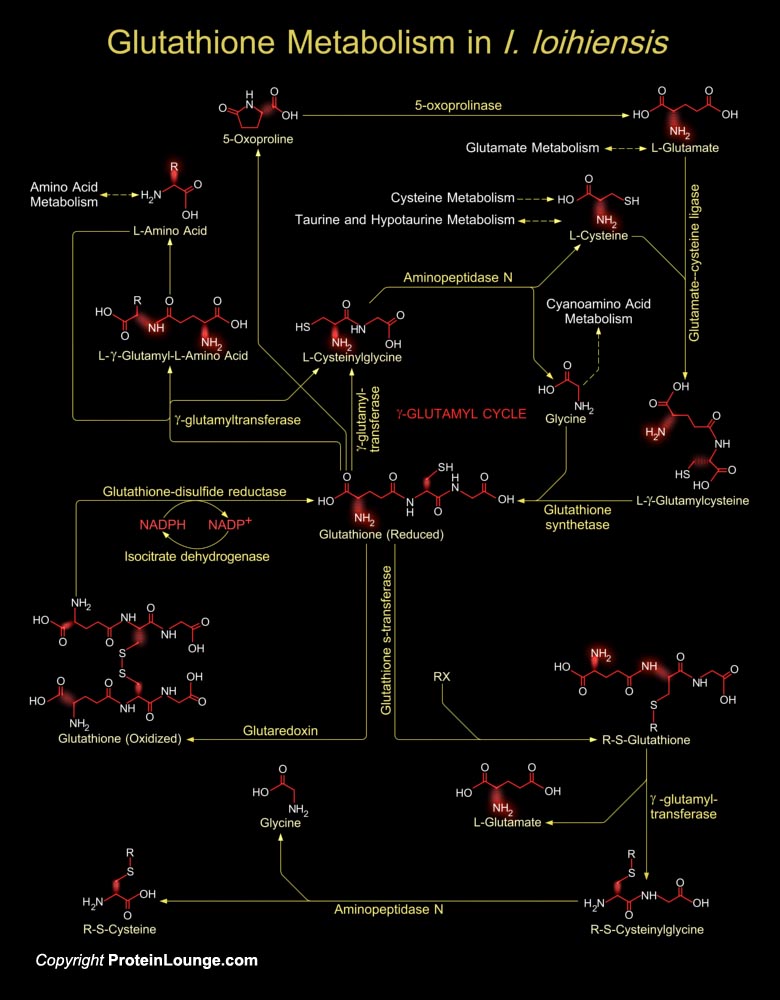
Idiomarina loihiensis is a deep-sea Gamma-proteobacterium. The bacterial genome encodes diverse peptidases, a variety of peptide and amino acid uptake systems, and versatile signal transduction machinery. In contrast to obligate anaerobic vent hyperthermophiles, I. loihiensis inhabits partially oxygenated cold waters at the periphery of the vent, surviving a wide range of growth temperatures (from 4°C to 46°C) and salinities (from 0.5% to 20% NaCl). The source of amino acids for I. loihiensis growth is the proteinaceous particles, present in the deep sea hydrothermal vent waters. The microbe is an opportunistic colonizer of proteinaceous particles in the deep-sea hydrothermal vent waters and colonizes these particles by using the secreted exopolysaccharide,[..]
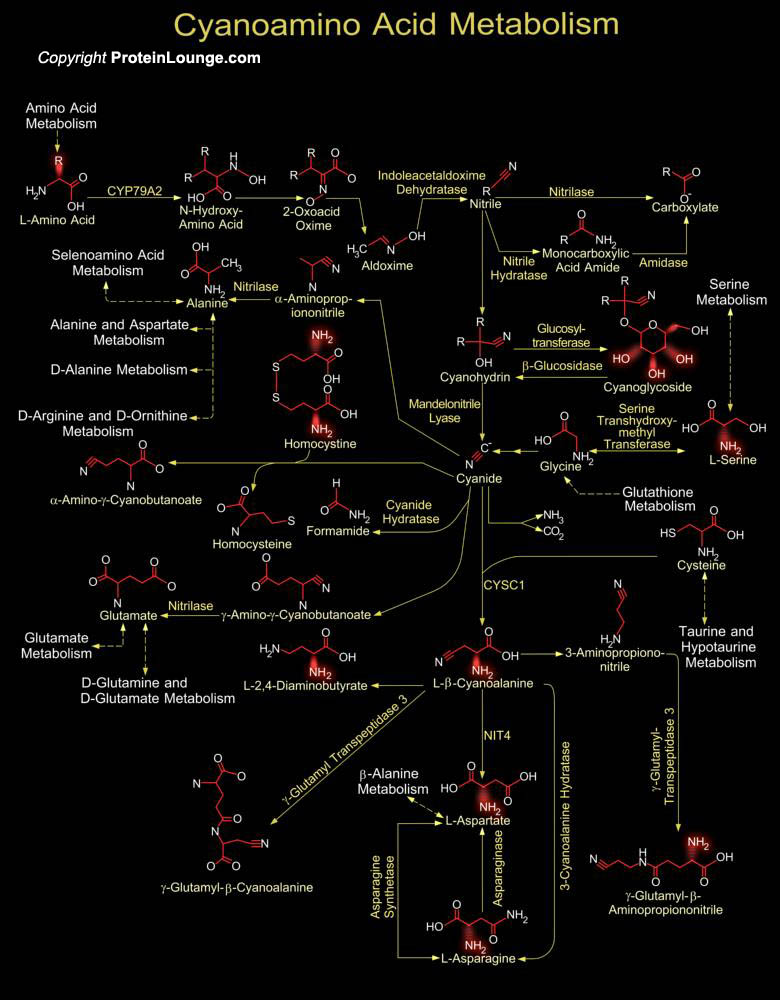
Cyanide is an important industrial chemical produced on a grand scale each year. Under physiological conditions at pH 7, Cyanide is mostly present as HCN (Hydrogen Cyanide). HCN, being volatile and less dense than air, can rapidly diffuse into the environment. Although extremely toxic to mammalian life, Cyanide is a natural product generated during Cyanogenesis by fungi, algae, plants and bacteria. These organisms degrade Cyanide either to detoxify it, or to use it as a source of nitrogen for growth. Cyanogenesis in a wide range of plants constitutes a chemical defense against herbivores and pathogens. Plants use Cyanogenic Glucosides (e.g. Amygdalin) as precursors of Cyanide. Cyanide detoxification mechanisms are widespread in nature and involve enzymatic degradation[..]
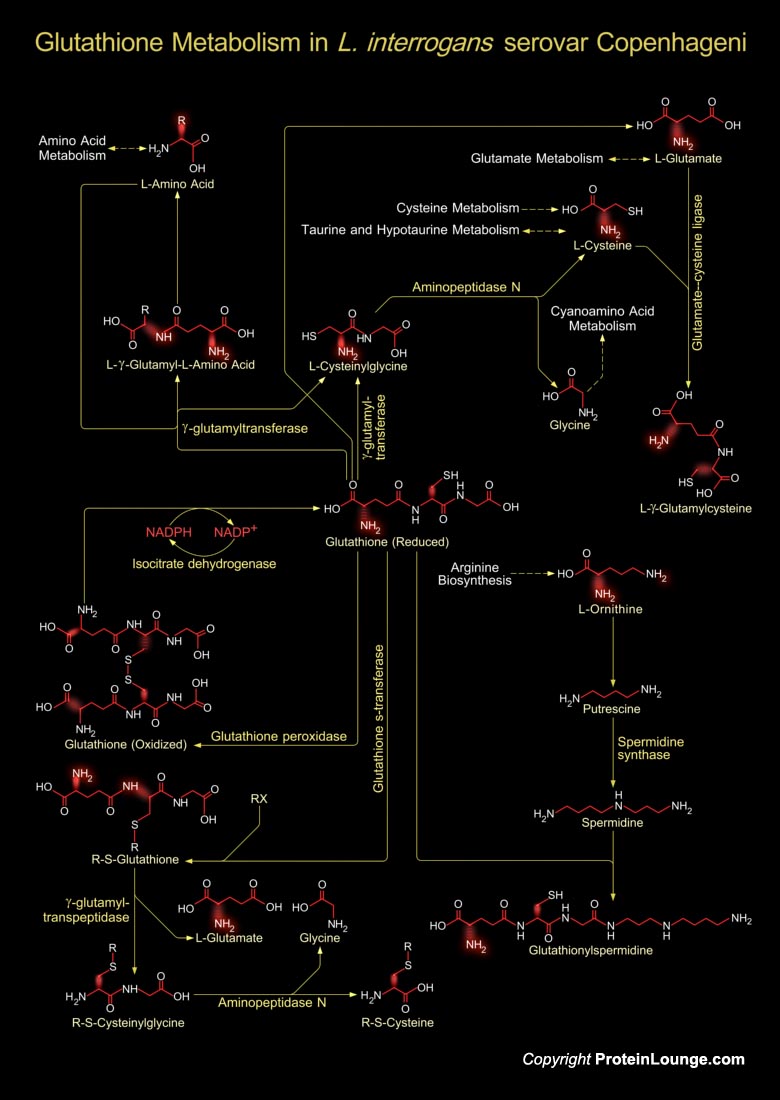
Leptospira is a genus of spirochaete Gram negative bacteria, which is divided into 20 species. Leptospira are obligate aerobe spirochete with cytoplasmic and outer membrane and two flagella that extend from the cytoplasmic membrane at the ends of the bacterium into the periplasmic space and are necessary for the motility of Leptospira. Leptospira interrogans are also grouped into serovars according to their antigenic relatedness. There are currently over 200 recognized serovars. L. interrogans infects wild and domestic animals, including pet dogs. Humans are accidental hosts. L. interrogans is usually transmitted to humans through contact with infected animal urine, either directly or in water. It invades directly through broken skin and can replicate in the liver and[..]
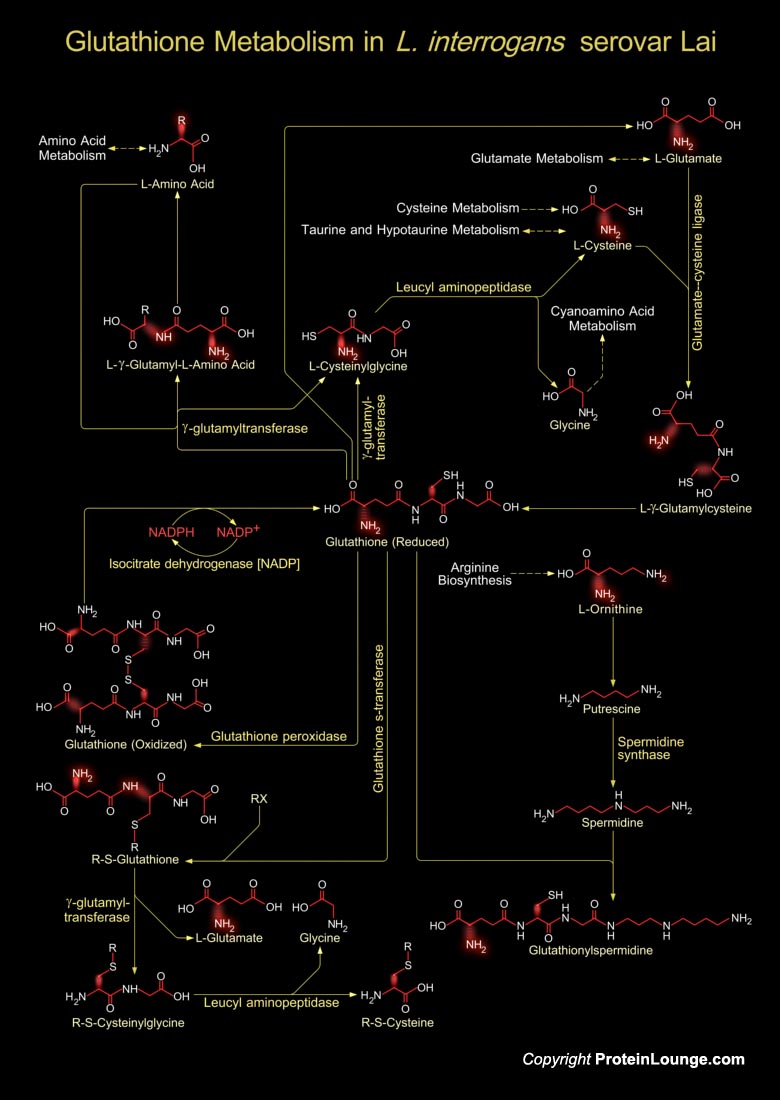
Leptospira is a genus of spirochetal bacteria and the causative agent of leptospirosis, a zoonotic disease of worldwide distribution. There are over 230 recognized serovars of pathogenic leptospires. Leptospira causes Leptospirosis, which causes a wide range of clinical manifestations ranging from a simple febrile illness to systemic complications such as pulmonary hemorrhage syndrome, acute kidney injury and hepatic failure (Ref.1) Leptospira interrogans serovar is an aerobic highly invasive spirochete, the cause of the harmful disease Leptospirosis, which affects many animals and humans. It grows best at pH levels between 7.2 and 7.6, preferring an alkaline habitat to acidic. Virulent serovar Type strain Lai of L. interrogans serogroup Icterohaemorrhagiae consists of[..]
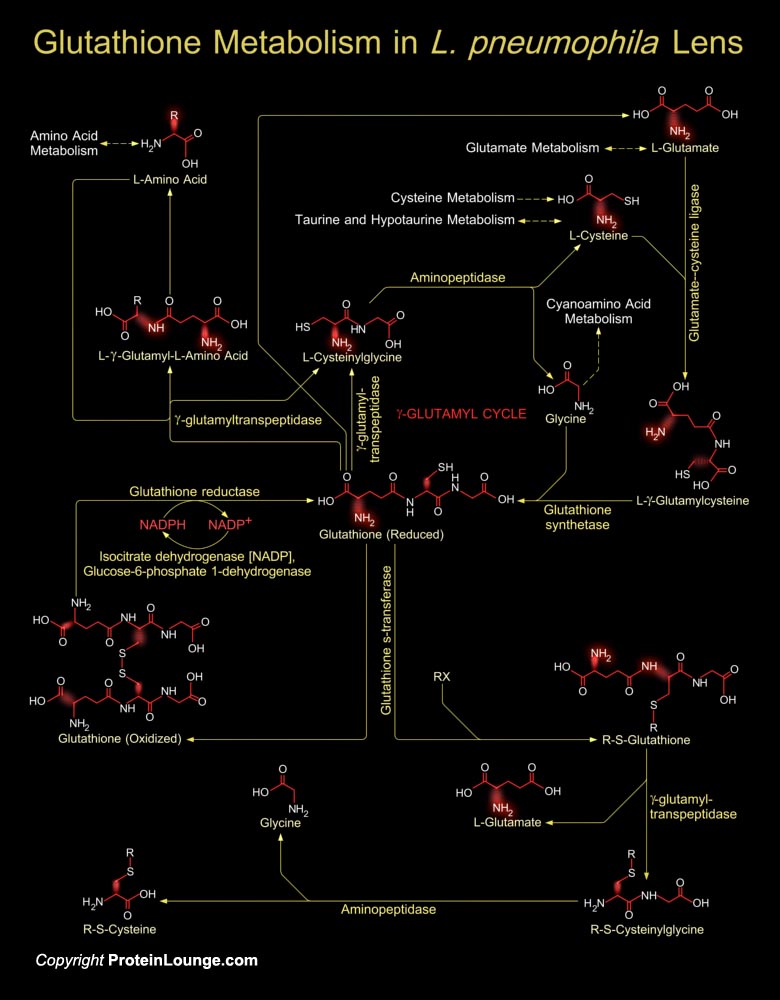
Legionella pneumophila is a motile, rod-shaped, Gram-negative, aerobic, bacterium, considered to be a facultative parasite. L. pneumophila is the causative agent of the Legionnaires' disease, a potential fatal pneumonia. L. pneumophila Lens is an epidemic strain L. pneumophila Paris was responsible for a major outbreak of disease in France. Other virulent strains belonging to serogroup 1 are Lens, Philadelphia, Lorraine (Ref.1&2).Glutathione metabolism in L. pneumophila occurs within cells in two closely linked, enzymatically controlled reactions that utilize ATP and draw on nonessential amino acids as substrates. Glutathione is a tripeptide, composed of glutamate, cysteine and glycine, and has numerous important functions within the bacterial cell. This[..]
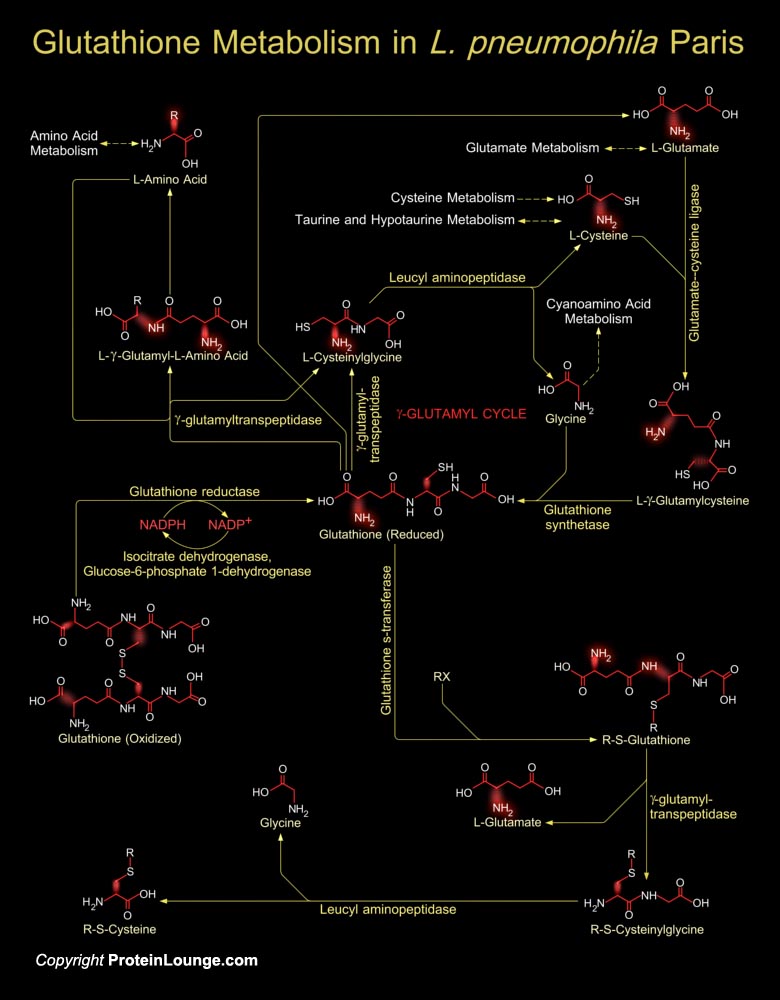
Legionella pneumophila is a thin, aerobic, pleomorphic, flagellated, non-spore-forming, Gram-negative bacterium of the genus Legionella that proliferates within alveolar macrophages, causing Legionnaires’ disease (Ref.1). It inhabits freshwater ecosystems, where it is present in biofilm or as planktonic form. L. pneumophila is mainly found associated with protozoa, which serve as protection from hostile environments and as replication niche. If inhaled within aerosols, L. pneumophila is also able to infect and replicate in human alveolar macrophages, eventually causing the Legionnaires' disease (Ref.2). Infection with Legionella bacteria is one of the major causes of community-acquired pneumonia L. pneumophila serogroup 1 strain Paris was responsible for 2[..]
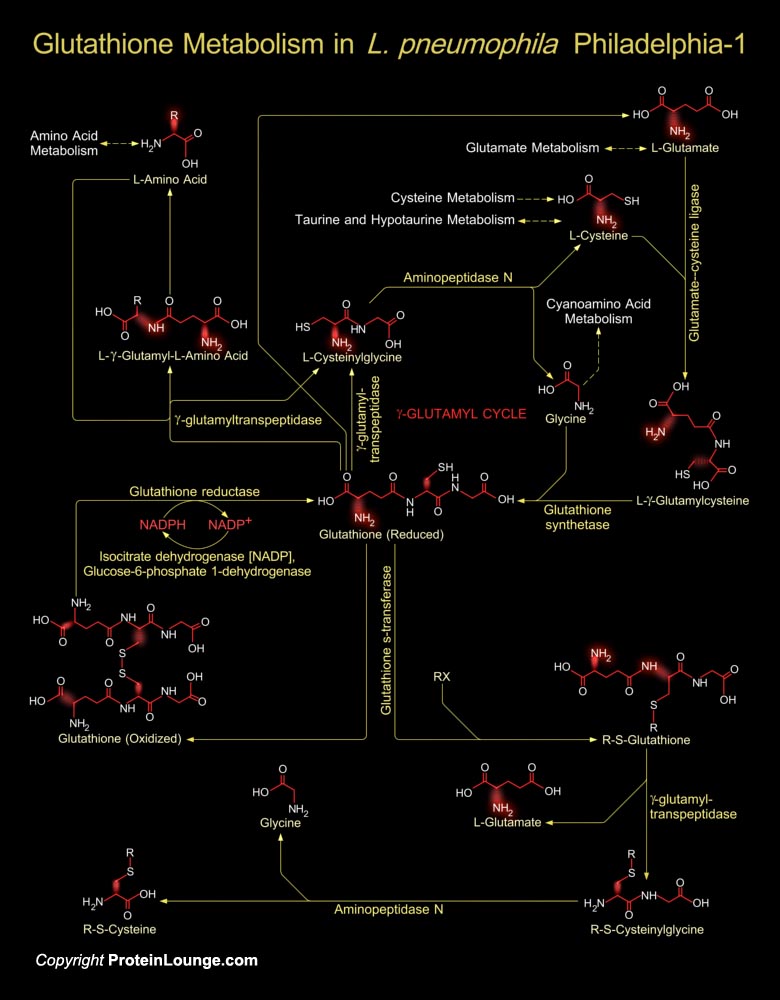
The genus Legionella represents a wide variety of Gram-negative, aerobic, bacterium that can, under certain circumstances, cause pneumonia, particularly in debilitated individuals. By far the most common species of Legionella responsible for such infections is Legionella pneumophila, considered to be a facultative parasite. L. pneumophila is the causative agent of the Legionnaires' disease, a potential fatal pneumonia. The fatality rate for Legionella pneumonia can be as high as 50% in immunocompromised patients, but if diagnosed early, antibiotic therapy commonly results in a successful outcome. In general, among the L. pneumophila clinical isolates, L. pneumophila Philadelphia-1 is the most widely studied that do not display high levels of innate resistance to[..]
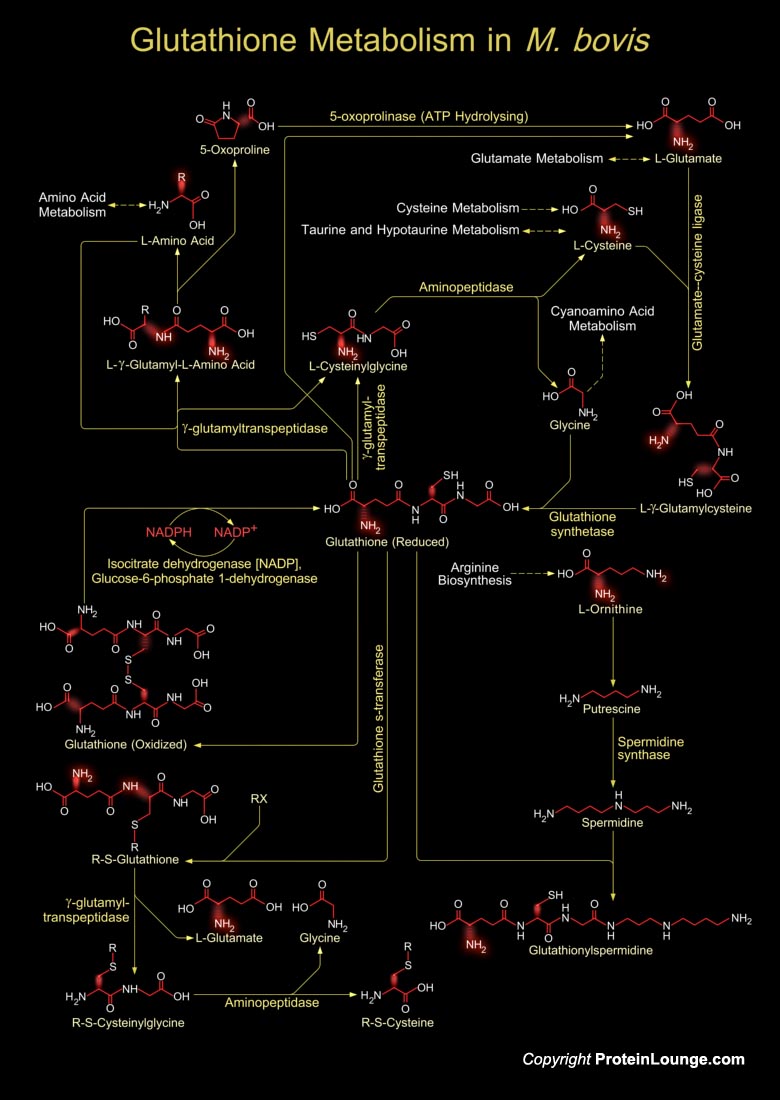
Mycobacterium bovis (M. bovis), is a Mycobacterium tuberculosis complex species responsible for tuberculosis in cattle and zoonotic tuberculosis in humans. Mycobacteria are Gram-positive, non-motile, pleomorphic rods shaped bacteria related to the Actinomyces. Most Mycobacteria are found in habitats such as water or soil. Bovine tuberculosis is a chronic, deadly infection most often caused by M. bovis and Mycobacterium caprae (M. caprae), two species belonging to the Mycobacterium tuberculosis complex. Mycobacterium bovis M. bovis is a slow-growing (16- to 20-hour generation time) aerobic bacterium and the causative agent of tuberculosis in cattle (Ref.1&2). Glutathione (GSH), short for γ-l-glutamyl-l-cysteinylglycine, is integral to cellular physiology[..]
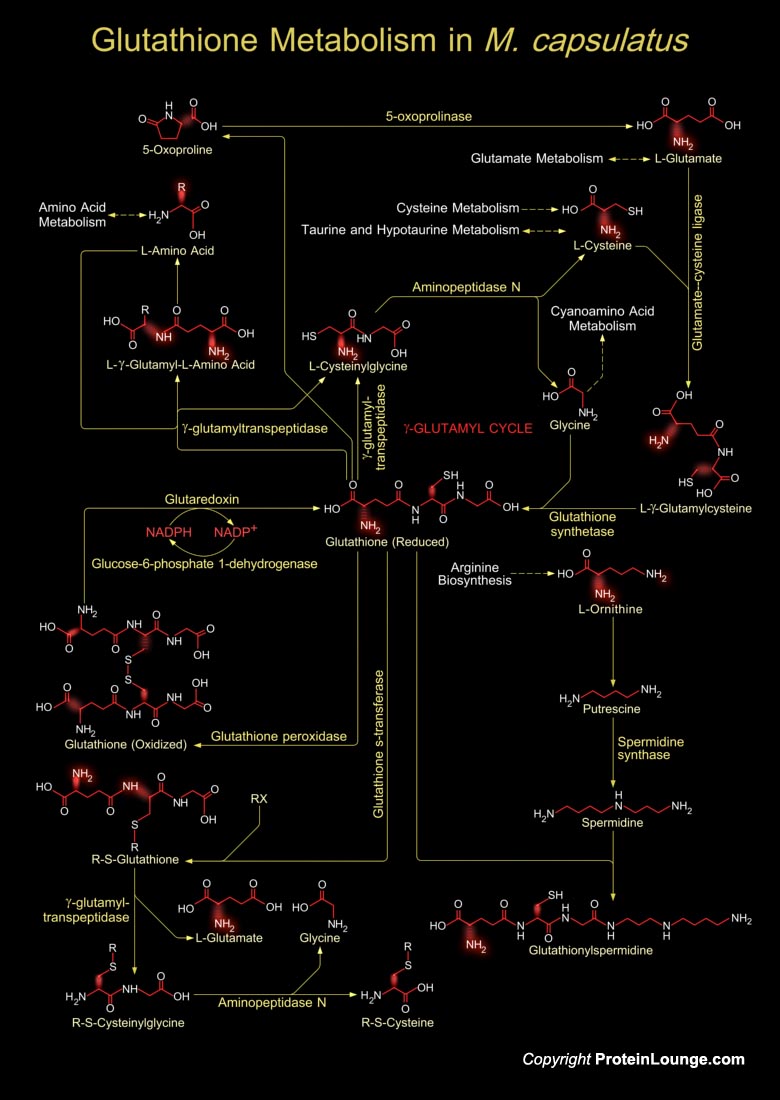
Methylococcus capsulatus is an obligate, Gram-negative methanotroph. Methanotrophs are responsible for the oxidation of biologically generated methane and therefore help reduce the amount of greenhouse gas that is released to Earth's atmosphere. The conversion of methane to biomass by M. capsulatus has been exploited for large-scale commercial production of microbial proteins by fermentation. Thus, the bacterium plays major roles in global carbon cycles, and in particular, substantially reduces emissions of biologically generated methane to the atmosphere. M. capsulatus genome is highly specialized for a methanotrophic lifestyle, including redundant pathways, predicted to be involved in methanotrophy and duplicated genes for essential enzymes such as the methane[..]
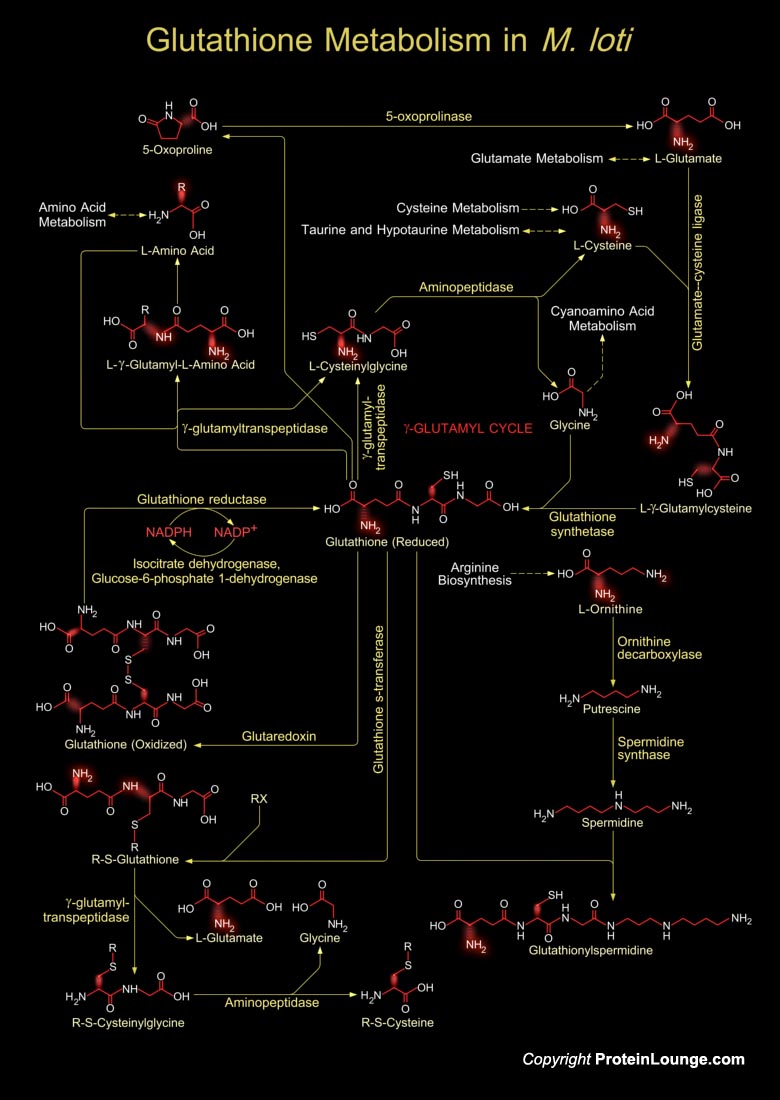
Rhizobium, Bradyrhizobium, Mesorhizobium, Sinorhizobium and Azorhizobium-known as Rhizobia-are Gram-negative, nitrogen-fixing bacteria of agronomic importance because they perform nitrogen-fixing symbiosis with leguminous plants. Nodule formation and the subsequent nitrogen-fixation result from a series of interactions controlled by the exchange of molecular signals between symbiotic bacteria and host plants followed by expression of genes from both symbiotic partners. Mesorhizobium loti formerly known as Rhizobium loti is able to form determinant-type globular nodules and perform nitrogen-fixation on several Lotus species. Glutathione metabolism in M. loti involves both the synthesis of Glutathione and its catabolism. Glutathione is a small molecule found in[..]
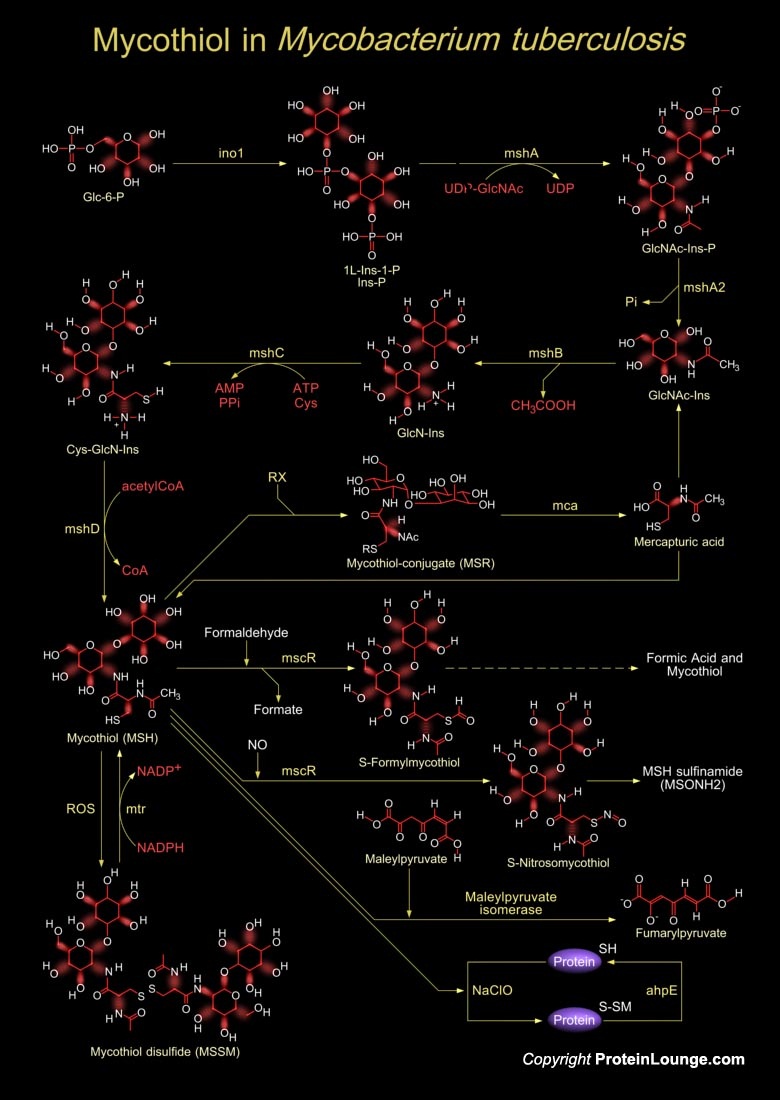
Mycobacterium tuberculosis is a Gram-positive bacterium of the family Actinomycetes. M. tuberculosis is the causative agent of Tuberculosis (TB) which is the world’s second commonest cause of death next to HIV/AIDS. M. tuberculosis is adept at resisting stresses imposed by host immunity, including reactive oxygen species (ROS), reactive nitrogen species (RNS), and restricted access to oxygen, iron, and metabolizable sources of carbon. During adaptation to such stresses, M. tuberculosis alters its physiology and enters a slowly replicating or nonreplicating state in which it becomes phenotypically relatively tolerant to most TB drugs (Ref.1). The increasing emergence of multi drug resistance and the recalcitrant nature of persistent infections pose an additional[..]
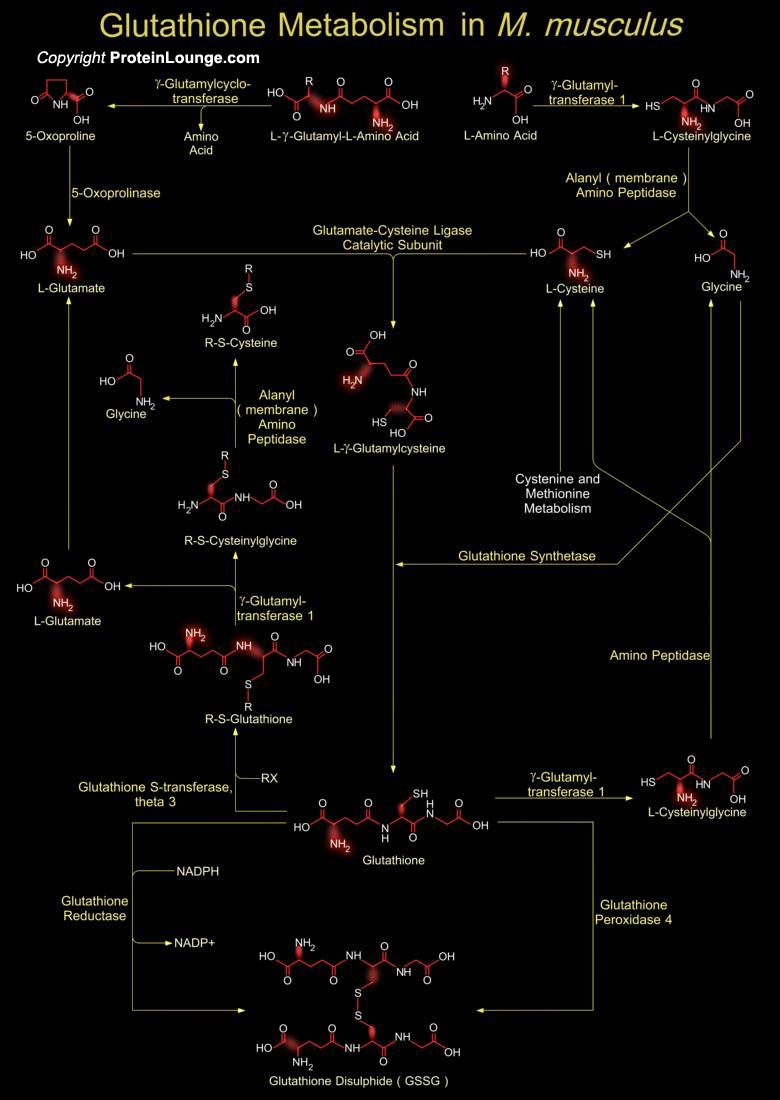
The tripeptide Glutathione is part of an integrated antioxidant system that protects cells and tissues from oxidative damage. Oxidative stress can result from exposure to excessive amounts of endogenous and exogenous electrophiles (Ref.1). Glutathione exists in two forms. The antioxidant "reduced Glutathione" tripeptide is conventionally called Glutathione and abbreviated Gsh; the oxidized form is a sulfur-sulfur linked compound, known as Glutathione Disulfide or GSSG. The GSSG/Gsh ratio may be a sensitive indicator of oxidative stress. Glutathione has potent electron-donating capacity. The reducing power of Gsh is a measure of its free-radical scavenging, electron-donating, and sulfhydryl-donating capacity. Reducing power is also the key to the multiple[..]

